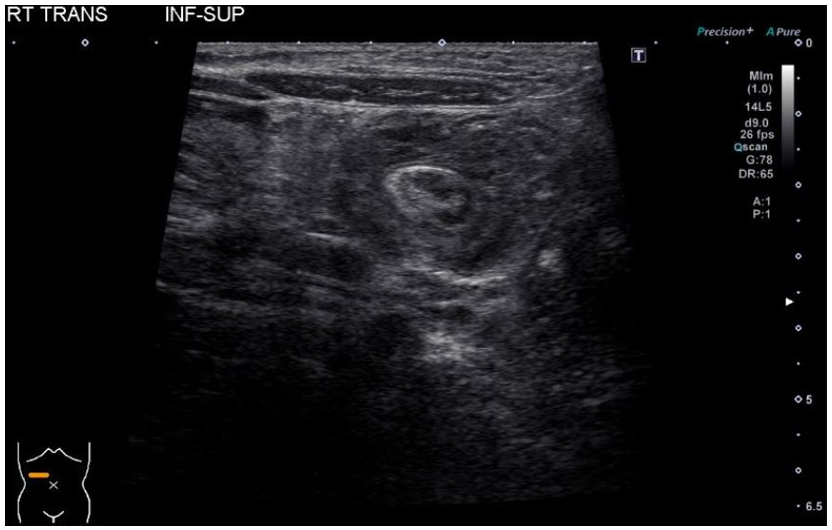Case 3
An 18 month old boy comes to the ER with chief complaint of vomiting. Vomit is nonbilious, nonbloody and has occurred 3 times today. Mom is concerned he is having abdominal pain due to the way he has been acting at home. She says starting yesterday, he was having periods where he would curl up in a ball and cry in pain. Nothing would help, then it seemed like the symptoms just went away on their own. Today, however, he seems to be in continuous pain which prompted her to bring him to the ED.
His vitals are Temp 37 HR 122 BP 100/66 RR 28 SpO2 100%
On your exam, he is tearful and appears uncomfortable. He is well hydrated. His abdominal exam is notable for distension with increased crying with palpation, but no apparent focal tenderness.
Most concerning in the history is the now apparent constant pain. Gastroenteritis could cause cramping abdominal pain in this age, but the change that occurred today is concerning. His distended abdomen with tenderness is the RED FLAG in his exam– gastroenteritis should not cause a distended or tender abdomen.
Given the history and exam, this patient should have imaging of his abdomen performed next.
For this patient, an ultrasound will point you toward the diagnosis.
This patient has the ultrasound seen here:

This ultrasound demonstrates intussusception. This is the most common cause of obstruction in children 3-36 months. This is often found in the terminal ileum with an intussusception into the cecum. Older children will present with abdominal pain and vomiting. A unique presentation of intussusception in young children is lethargy, poor feeding, and minimal obvious abdominal pain. If you see a young child (usually less than 12 months) that is afebrile and lethargic, consider adding intussusception to the differential.
If the patient has no signs of shock or perforation, management is an air contrast or barium enema. There is a small risk of perforation during the enema, and the surgical team should be notified prior to attempting the reduction.
References
Fleisher, G. R., & Ludwig, S. (Eds.). (2016). Textbook of pediatric emergency medicine. 7th Edition. Lippincott Williams & Wilkins.
Parashette, K & Croffie, J. (2013). Vomiting. Pediatrics in review, 34(7), 307-321.

Katie Edmunds is a current Pediatric Emergency Medicine Fellow interested in creating PEM 4 all those who are given the responsibility of treating the sickest babies wherever they may be.

